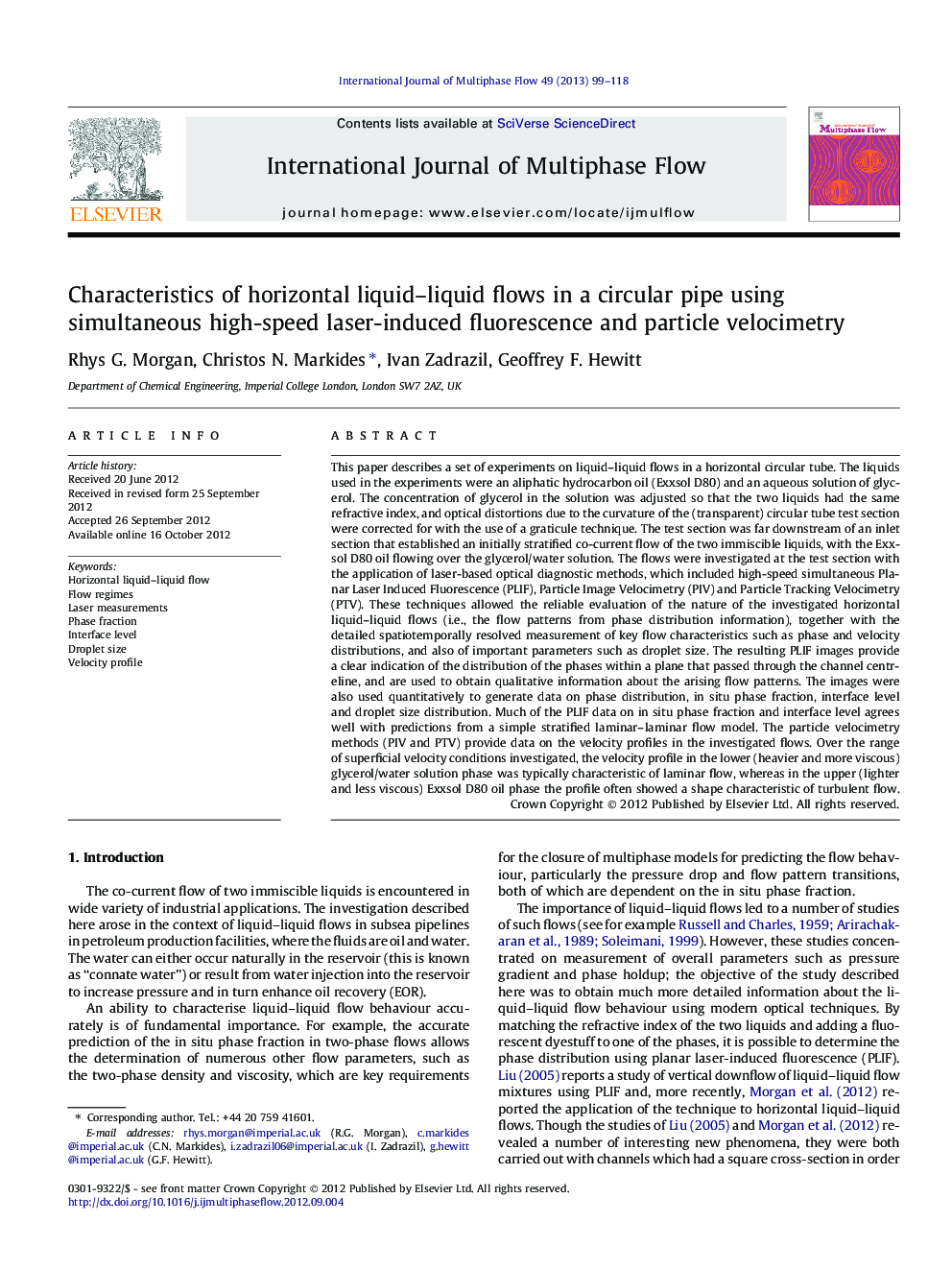| کد مقاله | کد نشریه | سال انتشار | مقاله انگلیسی | نسخه تمام متن |
|---|---|---|---|---|
| 667308 | 1458530 | 2013 | 20 صفحه PDF | دانلود رایگان |

This paper describes a set of experiments on liquid–liquid flows in a horizontal circular tube. The liquids used in the experiments were an aliphatic hydrocarbon oil (Exxsol D80) and an aqueous solution of glycerol. The concentration of glycerol in the solution was adjusted so that the two liquids had the same refractive index, and optical distortions due to the curvature of the (transparent) circular tube test section were corrected for with the use of a graticule technique. The test section was far downstream of an inlet section that established an initially stratified co-current flow of the two immiscible liquids, with the Exxsol D80 oil flowing over the glycerol/water solution. The flows were investigated at the test section with the application of laser-based optical diagnostic methods, which included high-speed simultaneous Planar Laser Induced Fluorescence (PLIF), Particle Image Velocimetry (PIV) and Particle Tracking Velocimetry (PTV). These techniques allowed the reliable evaluation of the nature of the investigated horizontal liquid–liquid flows (i.e., the flow patterns from phase distribution information), together with the detailed spatiotemporally resolved measurement of key flow characteristics such as phase and velocity distributions, and also of important parameters such as droplet size. The resulting PLIF images provide a clear indication of the distribution of the phases within a plane that passed through the channel centreline, and are used to obtain qualitative information about the arising flow patterns. The images were also used quantitatively to generate data on phase distribution, in situ phase fraction, interface level and droplet size distribution. Much of the PLIF data on in situ phase fraction and interface level agrees well with predictions from a simple stratified laminar–laminar flow model. The particle velocimetry methods (PIV and PTV) provide data on the velocity profiles in the investigated flows. Over the range of superficial velocity conditions investigated, the velocity profile in the lower (heavier and more viscous) glycerol/water solution phase was typically characteristic of laminar flow, whereas in the upper (lighter and less viscous) Exxsol D80 oil phase the profile often showed a shape characteristic of turbulent flow.
► Initially-stratified co-current horizontal liquid–liquid pipe flows have been studied.
► High-speed PLIF and PIV/PTV have been used for characterisation of the liquid–liquid flows.
► Eight flow regimes were identified from observations.
► Phase distribution, phase fraction, interface level, drop size and velocity profiles were measured.
► Measurements were compared with square cross-section results and simple laminar models.
Journal: International Journal of Multiphase Flow - Volume 49, March 2013, Pages 99–118